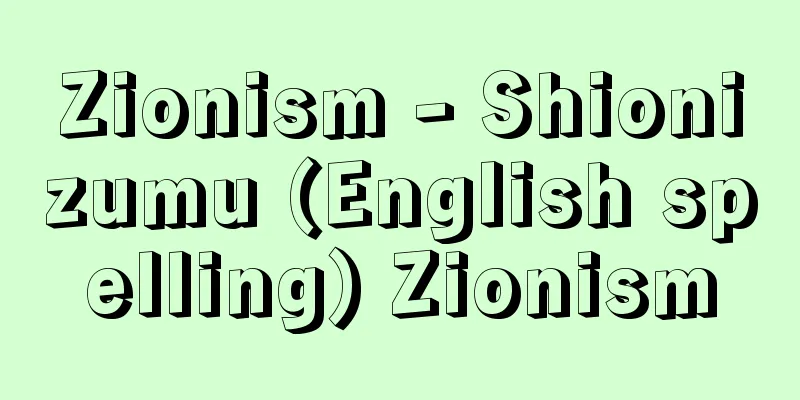Omori Shozo

|
Philosopher. Born in Okayama Prefecture. Graduated from the Department of Physics, Faculty of Science, Tokyo Imperial University in 1944 (Showa 19). After working at the Mitaka Laboratory of the Naval Technical Research Institute, he entered the Department of Philosophy, Faculty of Letters, University of Tokyo in 1946, graduating in 1949. After studying abroad at Oberlin College in the United States from 1950 to 1951, he became an assistant in the Faculty of Liberal Arts, University of Tokyo in 1952, a lecturer there in 1953, a professor there in 1966, and dean there from 1976 to 1977. He retired in 1982 and became a professor emeritus at the same university and a professor at the Open University of Japan. He was vice president of the Open University of Japan from 1983 to 1985, and retired from the university in 1989 (Heisei 1). After majoring in physics at university, Omori switched to philosophy, and after studying in the United States, he emerged in the Japanese philosophical world in 1953 as an introducer of logical positivism and analytical philosophy. Together with Sawada Nobushige (1916-2006) and Yoshida Natsuhiko (1928- ), he formed a group that took the position of "scientific philosophy," opening up a new dimension in philosophy that differed from existentialism and Marxism that had existed since before the Second World War, and the results of this were compiled in "Philosophy in the Scientific Age" (1964). From the 1950s to the end of the 1960s, Omori published many essays in the fields of analytical philosophy and philosophy of science, based on the arguments of Berkeley, Hume, and Wittgenstein. The main works are collected in Language, Perception, and the World (1971). During this period, Omori focused on language, perception, and the world, and argued from the standpoint of phenomenalism and solipsistic behaviorism. Regarding language, he rejected arguments that materialize the meaning of language, and regarded language as a function. Regarding perception, he criticized the tripartite structure of perception, consisting of "action," "content," and "object." Omori's argument that there is no distinction between perceptual action, perceptual content, and perceptual object is regarded as a pioneer of subjective-objective schema criticism. He also presented an original argument that the relationship between perceptual scenery and scientific description is not a causal relationship or a simple parallel relationship, but rather a "superimposition." All of these philosophies were attempts to see the relationship between the world and humans as it is, and to describe it in a flat manner. Its raw perspective and straightforward presentation challenged conventional thinking about language, perception, and the world. The greatest turning point in Omori's philosophy is said to be his essay "Kodama Theory" (1973). From the beginning of his philosophical endeavors, Omori has discussed the relationship between matter and mind, and the relationship between perception and the natural scientific worldview, from the perspective of seeing things as they are, as mentioned above. However, especially in the 1970s after "Kodama Theory," he criticized matter-mind dualism and advocated "manifestation monism" based on the key concept of "manifestation." This was a view that thoroughly pursued his previous phenomenalistic position, returning what was thought to be "inside the mind" to the world and grasping it as "manifestation." His essays from this period were compiled in "Things and Mind" (1976), "Flow and Stagnation: Philosophical Fragments" (1981), and "New Theory of Vision" (1982). In "emergent monism," the dualistic opposition between world and mind is denied, and the world is perceived as having mind. His work The Structure of Knowledge and Science (1983) argues for the restoration of this worldview, based on descriptions of the history of science. In the 1990s, Omori published a series of books, including "Time and the Ego" (1992), "Time and Being" (1994), and "Time Doesn't Flow" (1996), all of which dealt with the theory of time and the problem of the other self. In these books, Omori interprets the "present" as being experienced through "perceptual experience" and the "past" as being experienced through "recollection experience," and rejects the "naive realism" of the "past itself" as the reality of the past, which is contrasted with Kant's "thing-in-itself," and describes the past as a linguistic production. He also argues that the meaning of the other self is produced from the network of propositions that I experience. By thoroughly adopting a phenomenalist stance, he has reached a state of mind where he attempts to localize the understanding of phenomena in the scene of the act of producing them. As the name "Omori philosophy" was coined, Omori was a rare philosopher who did not limit himself to translating Western philosophy but developed his own thoughts, and from the 1970s to the 1980s, along with Hiromatsu Wataru, he became one of the most influential figures in the Japanese philosophical world. Philosophers who critically inherited Omori's philosophy include Noya Shigeki (1954-) and Nagai Hitoshi (1951-). In 1992, he received the 5th Watsuji Tetsuro Cultural Award for "Time and the Self." [Shigeo Kato, August 19, 2016] Language, Perception, and the World (1971, Iwanami Shoten) Matter and Mind (1976, University of Tokyo Press/Chikuma Gakugei Bunko) Flow and Stagnation: Philosophical Fragments (1981, Sangyo Tosho) New Theory of New Vision (1982, University of Tokyo Press) The Structure of Knowledge and Scholarship: The Construction of Knowledge and Its Spell (1983, Obunsha) Time and the Self (1992, Seidosha) Time and Being (1994, Seidosha) Philosophical Feast: Collection of Omori Shozo Roundtable Discussions (1994, Risosha) Time Does Not Flow (1996, Seidosha) Collected Works of Omori Shozo, 10 volumes (1998, 1999, Iwanami Shoten) "The Theory of Kotodama" (included in "Lecture Series on Philosophy 2: The World and Knowledge" edited by Omori Shozo, 1973, University of Tokyo Press)" ▽ "The Labyrinth of Philosophy - Criticism and Response to Omori Philosophy" edited by Noya Keiichi (1984, Sangyo Tosho)" ▽ "Omori Shozo - Monism in 'Appearance' written by Kurosaki Hiroshi" (included in "Riso" July 1990 issue, Risosha) [References] | | | | | |Source: Shogakukan Encyclopedia Nipponica About Encyclopedia Nipponica Information | Legend |
|
哲学者。岡山県生まれ。1944年(昭和19)東京帝国大学理学部物理学科卒業。海軍技術研究所三鷹実験所勤務を経て、1946年東京大学文学部哲学科入学、1949年卒業。1950~1951年アメリカ、オベリン大学留学を経て、1952年東京大学教養学部助手、1953年同講師、1966年同教授、1976~1977年同学部長。1982年定年退官し、同名誉教授、放送大学教授となる。1983~1985年放送大学副学長、1989年(平成1)同大学退職。 大森は大学で物理学を専攻したのち哲学に転身し、アメリカ留学後の1953年、論理実証主義、分析哲学の紹介者として日本の哲学界に登場した。沢田允茂(さわだのぶしげ)(1916―2006)、吉田夏彦(1928― )らと「科学的哲学」の立場をとるグループを形成し、第二次世界大戦前から続く実存主義、マルクス主義などと異なる哲学の新たな局面を開き、その成果は『科学時代の哲学』(1964)にまとめられた。 1950年代から1960年代末にかけて大森は、バークリー、ヒューム、ウィットゲンシュタインの議論を基に考察を重ね、分析哲学、科学哲学の分野の論考を多数発表する。そのおもなものは『言語・知覚・世界』(1971)に収録されている。この時期の大森は、言語、知覚、世界を中心的な対象とし、現象主義、独我論的行動主義の立場から論じた。言語については、言語の意味を実体化する議論を退け、言語を機能としてとらえた。知覚については、「作用」「内容」「対象」という知覚の三極構造を批判した。知覚作用、知覚内容、知覚対象は区別されないという大森の議論は主観・客観図式批判のさきがけとして評価される。また、知覚風景と科学的描写の関係は、因果関係でも単なる並行関係でもなく、「重ね描き」であるとする独創的な論を提出した。これらの哲学はいずれも、世界と人間の関係をあるがままに見て取り、平坦に述べようとする行為であった。そのあるがままの見方、平坦な述べ方が、言語、知覚、世界についての従来の考え方に訂正を迫るものとなったのである。 大森哲学の最大の節目となったのは、論文「ことだま論」(1973)だといわれる。大森はその哲学的営為の初めから、物と心の関係、知覚と自然科学的世界像の関係を、上述したようにありのままに見て取るという観点から論じているのだが、とくにこの「ことだま論」以降の1970年代、「立ち現われ」という鍵(かぎ)概念を軸に、物心二元論を批判して「立ち現われ一元論」を提唱することになる。それは、以前の現象主義的立場を徹底し、「心の中」にあると思われるものを、世界の側に返し、「立ち現われ」としてとらえる見方であった。この時期の論考は『物と心』(1976)、『流れとよどみ――哲学断章』(1981)、『新視覚新論』(1982)にまとめられた。 「立ち現われ一元論」では、世界と心という二元論的対立は否定され、世界は心あるものとしてとらえられるが、その世界観の復権を、科学史的記述を踏まえて論じたのが『知識と学問の構造』(1983)である。 1990年代に入って、大森は矢つぎばやに『時間と自我』(1992)、『時間と存在』(1994)、『時は流れず』(1996)という、いずれも時間論と他我問題を主題とした著作をあらわす。ここで大森は、「現在」が経験されるのは「知覚経験」を通してであるのと対比して「過去」が経験されるのは「想起経験」を通してであるととらえたうえで、カントのいう「物自体」と対比される、過去の実在としての「過去自体」についての「素朴実在論」を否定し、言語的制作物としての過去を描いている。また、他我の意味は私が経験する命題のネットワークから制作されると論じている。現象主義的立場を徹底することにより、現象の理解を、それを制作する行為の場面に定位しようとする境地に至ったといえる。 「大森哲学」という名がつくられたように、大森は西洋哲学の翻訳にとどまらずに自前の思考を展開する希有(けう)な哲学者として、1970年代から1980年代にかけて、廣松渉(ひろまつわたる)とともに、日本の哲学界で最大の影響力をもつ存在となった。大森哲学を批判的に継承する哲学者として、野矢茂樹(1954― )、永井均(ながいひとし)(1951― )らがいる。1992年『時間と自我』により第5回和辻哲郎文化賞受賞。 [加藤茂生 2016年8月19日] 『『言語・知覚・世界』(1971・岩波書店)』▽『『物と心』(1976・東京大学出版会/ちくま学芸文庫)』▽『『流れとよどみ――哲学断章』(1981・産業図書)』▽『『新視覚新論』(1982・東京大学出版会)』▽『『知識と学問の構造――知の講築とその呪縛』(1983・旺文社)』▽『『時間と自我』(1992・青土社)』▽『『時間と存在』(1994・青土社)』▽『『哲学の饗宴――大森荘蔵座談集』(1994・理想社)』▽『『時は流れず』(1996・青土社)』▽『『大森荘蔵著作集』全10巻(1998、1999・岩波書店)』▽『「ことだま論」(大森荘蔵編『講座哲学2 世界と知識』所収・1973・東京大学出版会)』▽『野家啓一編『哲学の迷路――大森哲学 批判と応答』(1984・産業図書)』▽『黒崎宏著「大森荘蔵――『立ち現われ』の一元論」(『理想』1990年7月号所収・理想社)』 [参照項目] | | | | | |出典 小学館 日本大百科全書(ニッポニカ)日本大百科全書(ニッポニカ)について 情報 | 凡例 |
Recommend
British - Englishman
…used as a nickname for a British national or a t...
External mesenchyme - external mesenchyme
…It is a type of connective tissue that forms bet...
Permission - Kyoka
It means lifting a general prohibition (obligatio...
Gong (English)
A type of idiophone. A disk with a bent edge. In p...
Kunisu - Trash
Also written as Kunisu or Kunisu. A resident who i...
Foreign Currency Bills - Foreign Currency
A foreign exchange bill whose face value is displa...
Ohara Shrine - Ohara Shrine
...During the winter farming off-season, many peo...
precious stone
...Therefore, even if artificial crystals, or syn...
microscopic anatomy
…However, it was not until the end of the Edo per...
Sarasabatera (Sarasa horseshoe cone) - Sarasabatera (English spelling) button top
A large snail shell of the family Muscidae (illust...
Gireya - Gireya
...In Russian, it is called futurizm. Four main g...
Sendai Plain
A general term for the main plains of Miyagi Pref...
Casablanca (English spelling)
In Arabic, it is called Ad-Dal al-Baydā, meaning &...
Inasa
〘 noun 〙 A wind that blows from the southeast. It ...
Gassho-zukuri
A form of Japanese architecture. A triangular sas...









